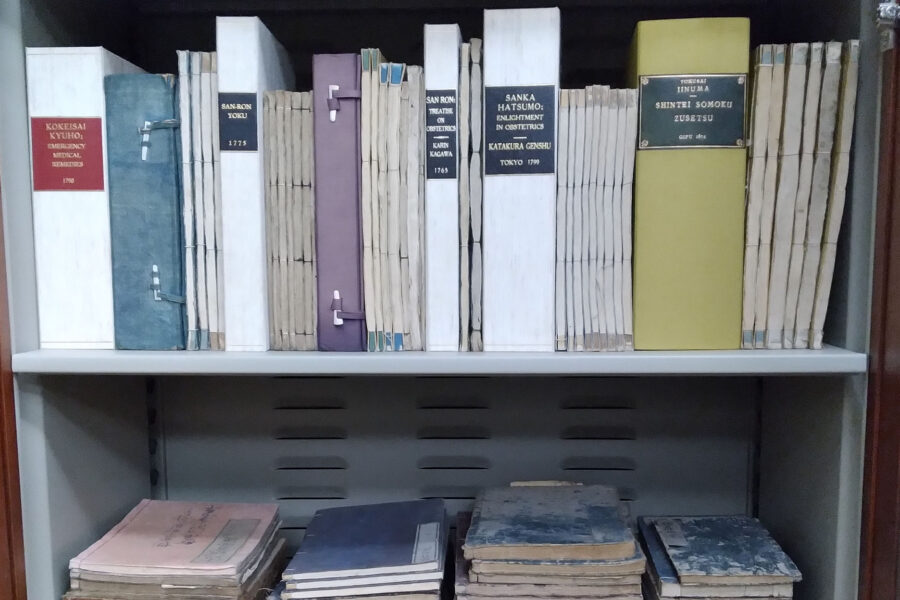The Edo period, which ran from 1603-1868, saw the emergence of obstetric science in Japan.
Obstetrics care was a highly gendered practice at the time, with male doctors of internal medicine and female midwives working separately. Midwifery was an unofficial position held by older women who assisted births with their hands, and engagement of doctors was limited to cases of stillbirth or miscarriage. Training was given informally between midwives and rarely documented.
A cornerstone text for obstetrical care during the Edo period, “Shigenshi Sanron,” or “Treatise on Obstetrics,” by Kagawa Gen’etsu, was the first text to blend traditional beliefs with Kagawa’s first-hand observations of anatomy. Originally practicing as an acupuncturist and masseur, Kagawa was asked to assist with a complicated birth and continued learning and writing on the subject. The Leon S. McGoogan Health Sciences Library’s rare book collection contains this work, the supplement and a later version, “Sanron’yoku,” by his adopted son.
Since Japan was closed to international contact, except for limited trade with China and the Netherlands, pregnancy and birthing care evolved independently of outside influence. Some similarities to images from Dutch obstetric texts can be seen in Japanese material, but it was illegal to use and share Western resources openly, making Kagawa’s text and those that followed vital resources for sharing knowledge during the period.
The end of the Edo period and rise of the Meiji period was a time of great political and social change in Japan. The country began to interact with Western countries, stimulating trade of goods and ideas.
These changes extended to medicine and obstetrics. Local hygiene officers were installed in most cities, publishing texts on proper hygiene, offering guidance on sanitation and enforcing standards. They encouraged midwives to bring in doctors with birthing equipment for “difficult” births and discouraged them from using their hands to examine patients. The first medical school was established in 1872 to standardize medical education in Japan, which eventually called for official midwife education, as well. This created a divide between midwives of older, Edo practices and modernly trained midwives.
The McGoogan Library’s rare book collection contains more than 15 Japanese obstetrics, gynecology and pediatric texts spanning from 1653-1880s, showing examples of Edo and Meiji birthing tools and techniques. Several volumes contain illustrations printed with water-based inks, compared to the oil-based inks used in Western printing, which created vibrant colors and transparency.
The practice of hanakotoba, or the Japanese language of flowers, also can be seen in some images. Symbolic flowers representing different ideas ideal for pregnancy, such as maternal love and hope, can be identified. One example, “Fubu No On Wo Shiru Zu,” or “Realize One’s Parental Love,” is on display through March in the rare book gallery on Level 5 of Wittson Hall.
To see these and other rare books, email rare book librarian Erin Torell.
